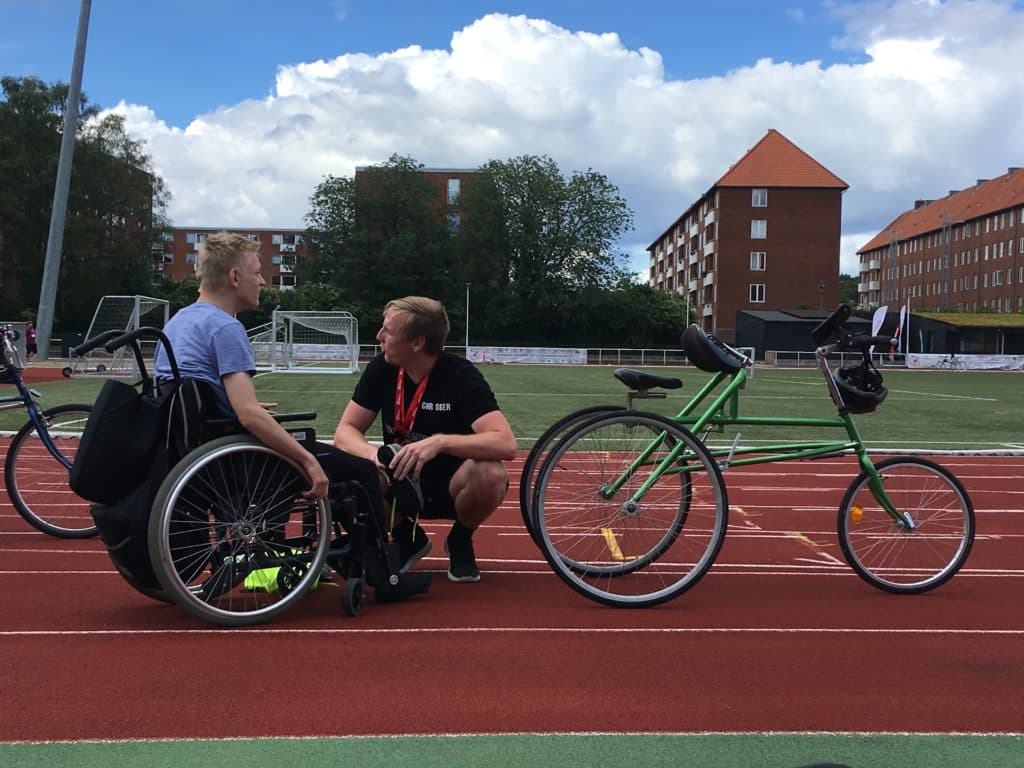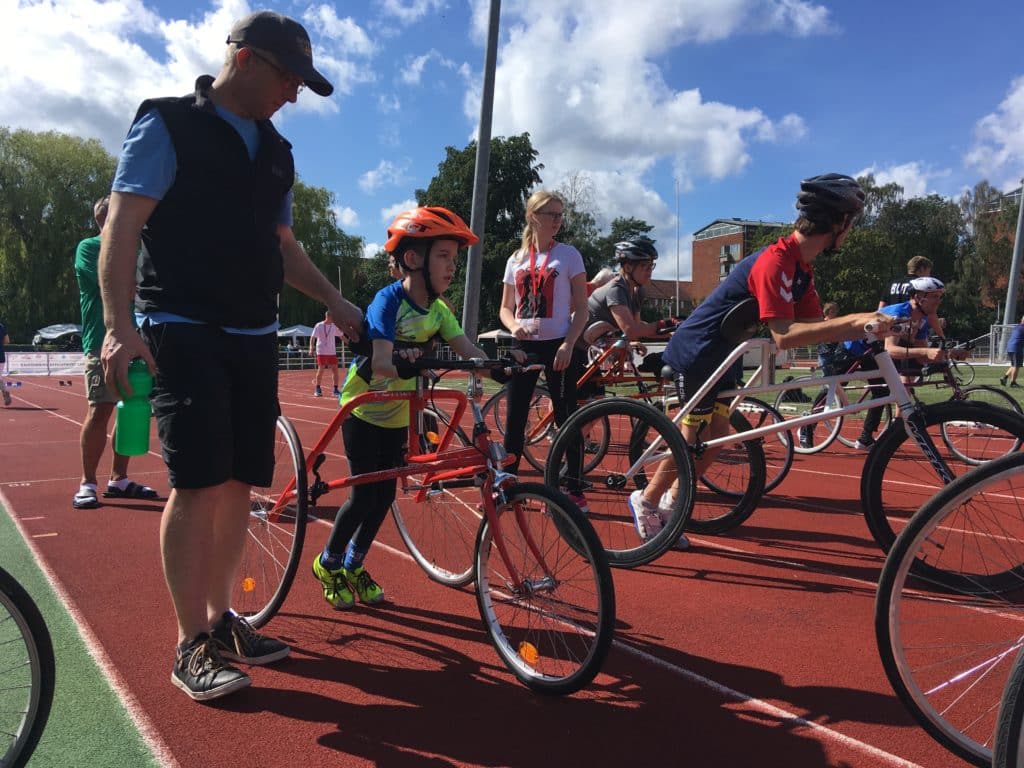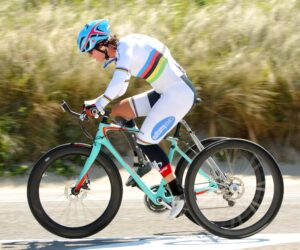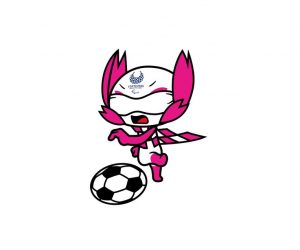Frame Running (also known as RaceRunning) is a sport designed for athletes with disabilities and balance impairments.
Athletes use a running bike called Frame Runner, which features a three-wheeled frame with saddle and body supports and no pedals. They should have the ability to steering the bike
The Frame Runner bike allows individuals with Cerebral Palsy, Muscular Dystrophy, Parkinson’s Disease, spasticity, and other disabilities that impede balance and mobility, to walk and run under their power. Athletes competing in a variety of distances similar to the traditional track meet, from 40-3000 meters. Currently, Frame Running/Race Running is being developed by CPISRA: Cerebral Palsy International Sports and Recreation Association.

The Frame Running (RaceRunning) was born in Denmark in the 90s.
There are currently 30 countries internationally with registered Frame Running participants. Most are in Europan Union like Portugal, Denmark, Sweden, Norway, Nederland, Germany, Scotland and others plus Brasil, USA and Australia.
CPISRA and Paralympic Competitions
CPISRA manages the CP sport internationally. They have developed a classification system only for CP athletes with specific profiles. In addition to being included in the CPISRA Games, FrameRunning/ Race Running has also been featured in the IPC and IWAS Youth Games programs. As of 2018, Frame Running/ Race Running is a recognized Para-Athletics event; however, it is not currently on the Paralympic program.

HOW TO RUN WITH FRAME RUNNER / RACERUNNER
A FrameRunner/ Race Runner is a custom-built three-wheeled frame where the runner is fully supported by a saddle and leans against chest support, propelling themselves forward by the feet (one or both), while using the hands and/or arms to steer.
The low center of gravity and frame design offers good stability and poise while running or walking. The saddle unit counteracts lateral sway and can be used as a seat when resting.
Running with the FrameRunning /RaceRunner is a fun and low-impact activity that can be enjoyed with family, friends, and non- or disabled peers. It can open a whole new perspective on your abilities and opportunities, as well as a wide range of social interaction and learning experiences.
WHO CAN PARTICIPATE IN FRAME RUNNING(RACERUNNING )
As per the CPISRA Frme Running/ Race Running classification guide, the following impairments can join to FrameRunning/Race Running .
| Hypertonia | High Muscle tone |
| Spasticity | Spasticity is a velocity-dependent resistance of a muscle to stretch. |
| Dystonia | Dystonia is an involuntary alteration in the pattern of muscle activation during voluntary movement or maintenance of posture Sustained or intermittent Muscle contractions. |
| Rigidity | Rigidity is resistance to passive movement and is independent of posture and speed of movement. rigidity is not specific to particular tasks or postures. |
| Ataxia | Control of voluntary movement |
| Athetosis /Chorea | Involuntary contractions of muscles |
BASIC RULES OF FRAME RUNNING (RACERUNNING)
Please click here to download the Rule Book from CPISRA that is used at national/international events.
Classification
The CPISRA FrameRunning classification system has been designed to minimize the impact of impairment on the outcome of Competition so that Athletes who succeed in competition do so on the basis of their sporting ability.
In order to achieve this purpose, Athletes are classified according to the extent of Activity Limitations resulting from their impairment.
The term “classification”, as used in these Rules, refers to the process by which Athletes are assessed by reference to the impact of impairment on the performance of CPISRA Frame Running. It is intended to provide a framework for fair competition and to ensure that competitive success is determined by the strategies, skills, and talent of Athletes.
The Current FrameRunning Classification included three different Classes as RR1, RR2, RR3.
RR1: Severe involvement of lower limbs and trunk, ineffective leg propulsion, poor trunk control, and upper limb involvement
RR2: Moderate involvement of lower limbs and trunk. Asymmetry but more effective propulsion than RR1.
RR3: Mild to moderate involvement of one or both upper limbs, fair to good trunk control. Good push off and no startle reflex
For more information about CPISRA’s Frame Running classifications, click here.
https://www.youtube.com/watch?v=XwW_RymN_VAFram





Pingback: RaceRunning Classification (Part 1) | ParaVida Sport
Pingback: RaceRunning Classification (Part 2), Class RR1 | ParaVida
Pingback: RaceRunning Classification, Class RR2 (Part 3) | ParaVida
Pingback: Sport Is About Emotions And Feelings | ParaVida Sport
Pingback: RaceRunning Classification, Class RR3 (Part 4) | ParaVida
Superb, what a blog it is! This webpage provides useful information to us,
keep it up.
Pingback: Disability Definition And A Better Understanding Of Disabled
Pingback: What Makes Athletes Different? | ParaVida Sport
I blog often and I really appreciate your information.
The article has truly peaked my interest. I am going to take a note of your website and keep checking for new details about
once per week. I subscribed to your Feed too.
Very soon this web page will be famous amid
all blogging people, due to it’s good content
Pingback: Running Methods And Techniques In RaceRunning | ParaVida Sport
Pingback: RaceRunning Equipment Rules For Competitions.
Pingback: RaceRunning 1st Online International Conference
Pingback: 5 Benefits Of Sports For People With Special Needs
Pingback: Unbelievable Sports For People With Cerebral Palsy
Pingback: Balance Disorder Is Treatable
Pingback: Down Syndrome Won’t Make You Stop Doing Sports